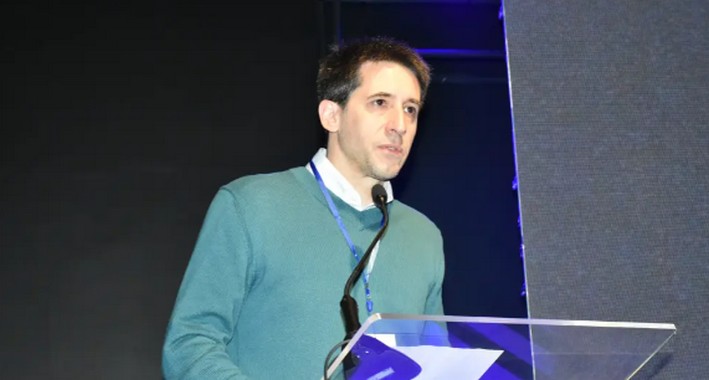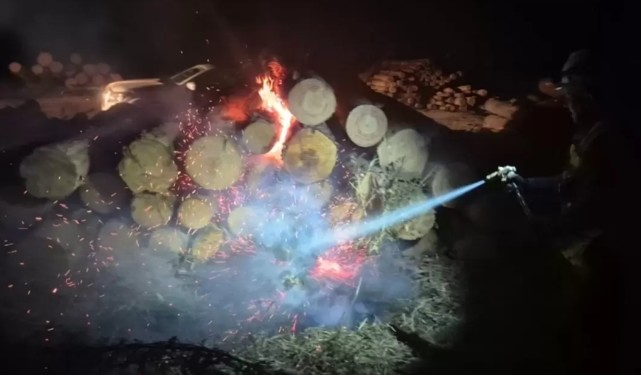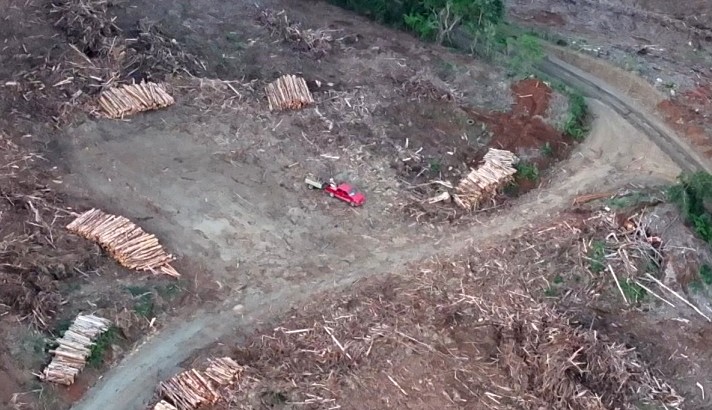Frane Zilic: "Los Ángeles is by far the capital of timber construction"
The third session of the Biobío 2050 cycle: Los Ángeles, capital of timber construction, featured one of its highlights with the presentation by Frane Zilic, an architect, Master in Timber Construction from the Universidad del Bío Bío, and current manager of Corfo's Regional Strategic Program "Modern methods of sustainable timber construction".
Drawing from his academic and professional experience, Zilic addressed the close relationship between timber and sustainability, urging to view this resource not only as a construction material but as a true ally in the fight against climate change and in the challenge of designing more efficient, healthy, and resilient cities.
"Forget about timber for a second," he proposed at the start of his presentation. With that invitation, he aimed to make the audience reflect on the role of trees as true "natural photovoltaic panels" capable of capturing energy, storing carbon, and generating a versatile, recyclable, and biocompatible material: timber.
The speaker recalled that humanity learned to work with this resource from its origins, and its development has accompanied major milestones of human progress: from maritime exploration to the construction of musical instruments and aircraft. Today, thanks to technology, timber has become a material capable of replacing steel and concrete in multiple applications, paving the way for a new architecture that combines sustainability with formal and structural innovation.
Zilic emphasized that the possibilities of timber are practically endless: it can be carved with submillimeter precision, used in industrialized prefabrication systems, applied in high-rise structures—such as towers over 140 meters tall—or in complex designs that would not be possible with other materials.
GLOBAL THREAT
Zilic warned that global forest loss threatens this potential. Over the past ten thousand years, humanity has destroyed two billion hectares of forest, and half of that loss has occurred in just 120 years. In Chile, the situation is no different: fifteen million hectares of forest have been lost over the last two centuries.
Faced with this scenario, he argued that the great challenge is to make maintaining or planting trees more profitable than replacing them with, for example, agriculture. To achieve this, he highlighted the urgency of sustainable forest landscape management models and economic incentive mechanisms, such as payment for ecosystem services or promoting the use of native forests with added value.
"If we want more timber and more forests, even if it sounds contradictory, we need to use more timber," he emphasized. In his analysis, as long as there is demand, there will be interest in preserving and planting forests, thus creating a virtuous cycle that benefits both the environment and the local economy.
LOS ÁNGELES ON THE PRODUCTIVE MAP
At this point, he placed the Biobío region at the center of the productive map. 98% of the processed timber produced in Chile comes from radiata pine, the largest concentration of which is precisely in this area. And within it, Los Ángeles stands out as the country's main hub for timber prefabrication.
"75% of the companies working in prefabrication do so in timber and are heavily concentrated in this region. And the municipality leading this activity in Chile is Los Ángeles, by far," he stated.
This statement became the hallmark of his intervention: a call for the local community to recognize and enhance its role as the epicenter of sustainable timber construction. "Believe the story, because Los Ángeles is the capital of timber construction. The material is here, the capabilities are here, and the arguments are more than clear," he concluded.
Zilic's presentation not only provided data and reflections but also made it evident that the future of sustainable development in the region is closely linked to strengthening the timber production chain. An opportunity that, if embraced with a long-term vision, could transform Los Ángeles into a reference not only nationally but also internationally in sustainable construction, he pointed out.
Source:La Tribuna

















